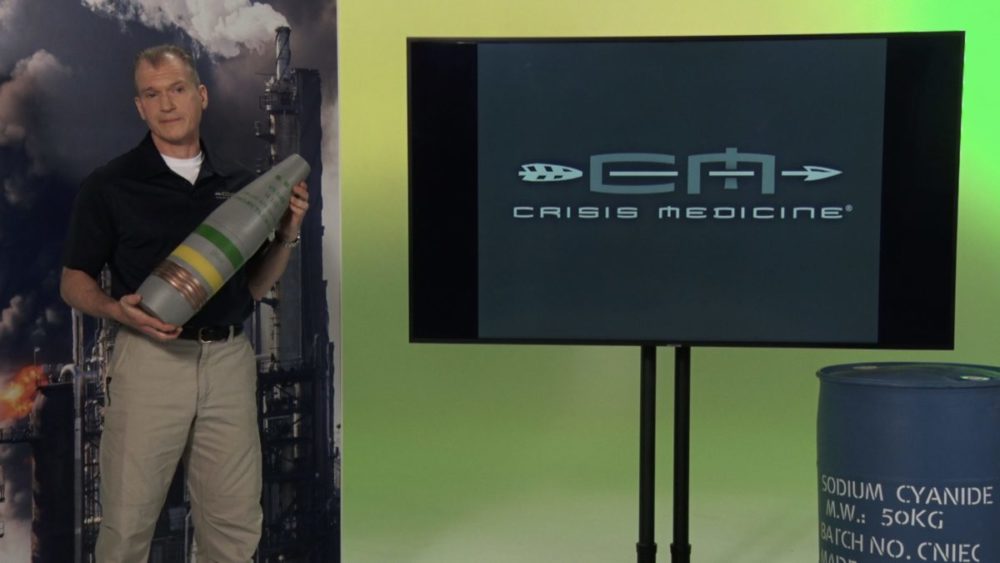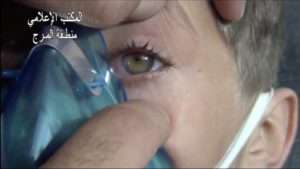
Why is CBRN relevant now?
- Posted by Mike Shertz MD/18D
- Categories Tactical CBRN
🕖 Reading Time, 3 minutes
In 2017, the CDC issued an emergency use authorization for a new atropine auto-injector manufacturing company because there was a sense there were not enough atropine auto-injectors in the national stockpile. Atropine is the standard drug treatment for nerve agent exposed casualties. Currently, the TCCC committee and FEMA are working on Chemical Warfare Agent casualty management guidelines. The TECC committee published guidelines in August 2021.
Why are all three of these organizations addressing chemical threats now?
Obtaining a small nuclear device or enough radiologic material to manufacture a “dirty bomb” or radiologic dispersion device is very logistically challenging. Moreover, even if one was acquired, marine ports worldwide monitor radiation levels on ships and vehicles, turning away any that are questionable.
On the other hand, chemical weapons have been plentiful throughout the world, with many countries that could never enter the nuclear arena having robust chemical weapons programs. Chemical warfare agents have been placed in rockets and artillery shells, the latter of which can be as small as very portable mortar rounds. A nuclear device in a backpack is an exceptionally unlikely threat. A 155 mm VX artillery shell in a backpack is just heavy. Duly noted, but when is the last time any of these agents were used?
Ten liters of dilute sarin nerve agents were disseminated in the Tokyo subway by a doomsday cult in 1995. Over 5,500 potential casualties were evaluated. 136 EMS providers were also symptomatic. Sarin nerve agent manufacture is considered to be within the abilities of anyone with graduate-level chemistry expertise.
In 2011, Syria had a large and operational chemical weapons arsenal containing mustard, a vesicant or blister forming agent, as well as sarin, and VX, both of which are nerve agents. Between 2013 and 2018, there were multiple uses of chemical weapons in the Syrian Civil War, including chlorine gas, and including on the civilian population.
In 2017, at the Kuala Lumpur airport in Malaysia, Kim Jong-Nam (the estranged brother of Kim Jong-Un, the current leader of North Korea), was killed when two women rubbed substances on his face that ultimately were a binary version of VX nerve agent. In Salisbury, England in 2018, former Russian military intelligence officer Sergei Skirpal and his daughter were poisoned with a Novichok nerve agent that was intentionally placed on the front door handle of his flat. In 2020, Russian opposition activist Alexei Navalny was similarly poisoned with a Novichok agent. Novichok, which means “newcomer” in Russian, was the byproduct of a highly classified Soviet / Russian nerve agent program from the 1970s to the 1990s.
VX and the Novichok agents represent the most sophisticated nerve agents ever manufactured. The fact that they are appearing in the public now is terrifying.
TRAIN NOWOnline Tactical Casualty Care ClassesTactical-CBRNOnline Course
Dr. Mike Shertz is the Owner and Lead Instructor at Crisis Medicine. Dr. Shertz is a dual-boarded Emergency Medicine and EMS physician, having spent over 30 years gaining the experience and insight to create and provide his comprehensive, science-informed, training to better prepare everyday citizens, law enforcement, EMS, and the military to manage casualties and wounded in high-risk environments. Drawing on his prior experience as an Army Special Forces medic (18D), two decades as an armed, embedded tactical medic on a regional SWAT team, and as a Fire Service and EMS medical director.
Using a combination of current and historical events, Dr. Shertz’s lectures include relevant, illustrative photos, as well as hands-on demonstrations to demystify the how, why, when to use each emergency medical procedure you need to become a Force Multiplier for Good.





